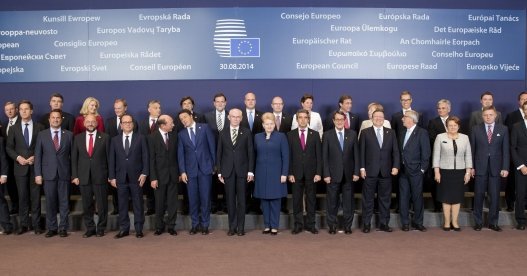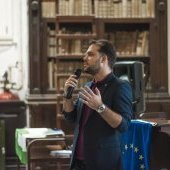Welcome the new #EUtopjobs nominees
Come August, politics goes on holiday, and Europe along with it. Or it would have, if it weren’t for the extraordinary European Council of last July 16th. Then, the so-called «top jobs» should have been decided upon. A number of hurdles, however, forced elected representatives, civil servants and journalists to another extraordinary summit on Saturday, August 30th, in an unforeseen breach of protocol. A full month of bilateral calls and meetings – and speculation on the negotiations – ensued, much to the EU bubble’s delight.
Despite crucial economic and foreign issues on the table – such as Ukraine, the Middle East, the risk of a «triple dip» recession in Europe – all eyes were pointed at a single task in the order of business: the nomination of Donald Tusk as President of the European Council and of Federica Mogherini as High Representative of the Union for Foreign Affairs and Security Policy. In short, Mr Europe and – for Latin languages only – Lady PESC.
Donald Tusk, the Eastern hawk
Tusk is Polish, born 1957, married with two children. A life-long politician, he took his first steps in political activism in Solidarność at university. He was elected leader of Civic Platform (EPP member) in 2003 and Prime Minister of Poland in 2007. He is the architect of the Polish economic miracle, as his was the only Member State avoiding a recession in every quarter of the crisis. David Cameron from the UK considers him a strong ally in leading the «reform» of the EU.
As his compatriot Radek Sikorski and most of Central and Eastern Europe, he’s part of the hawkish front on the Ukrainian issue. To that extent, he compensates a more «accommodating» Mogherini. He speaks fluent German, but doesn’t understand French and it is rumoured that English is no strong suit of his. His predecessor on the other hand – Herman van Rompuy, Belgian – currently spoke Flemish, French and English. It’s this – and his ability for fine tuning of complex multi-lateral compromises – that made him such a successful President. Tusk is left with a burdensome legacy to live up to, as many exacting issues lie before him. Promising laughing reporters «I will polish my English» may not be enough.
Federica Mogherini, the Southern dove
Mogherini is Italian, born 1973, also married with two children. Her political and European activism started in the youth organisation of the Italian Communist Party, then went on in the Democratic Left and now in the Democratic Party. Two-times MP, member of the Committees on Defence and Foreign Affairs of the Chamber of Deputies, Italy’s lower house. Member, among others, of the international network for nuclear disarmament. The main critique she was subject to was of being too young and inexperienced, having been in office as a Foreign Affairs Minister only for six months.
A similar critique was directed at Lady Ashton, the previous High Representative from the UK. It is often forgotten, however, that it is «the invisible» Ashton who succeeded in the endeavour of establishing a real European diplomatic system, the European External Action Service (EEAS), nonexistent before the Lisbon Treaty. Even though experts were puzzled over Ashton’s nomination, her ability to build consensus away from the footlights has made such successes as the Kosovo conflict resolution or Iran’s suspension of nuclear energy testing possible.
Mogherini’s predisposition thus seems to be perfectly in line with her predecessor. She speaks French and English fluently, and declared in an interview in April that to resolve crises «it is necessary to invest on the common interests of all sides». At the Foreign Affairs Ministry she had the humility of listening to the opinions of «expert» advisors, studying dossiers in detail to understand the complexity of ongoing conflicts, refusing the «good-guy-or-bad-guy» logic in favour of a more nuanced approach, fully taking advantage of the potential of the Ministry. As a European Foreign Affairs Minister (an unpopular lettering in the Council, but Mogherini is a committed federalist), she will have at her disposal an even more powerful diplomatic service.
A European Minister for Foreign Affairs
Even her taciturnity on pressing international matters (the Israel-Gaza conflict, above all) as Italian FM must be understood as a preparation to this role, to avoid clashes with other Member States’ and maintain her «diplomatic capital» intact. Prime Minister Renzi obtained an important win in Europe that he is spending at home to push forward his reform agenda. Federica Mogherini, nonetheless, has the chance and the capacity to be independent from her Government and represent Europe as a whole. Her choice of setting up her office at the Berlaymont with other Commissioners, instead of at the EEAS, has great symbolic value. It tells us she will work so that her office will not be just a prestigious appointment, but an influential, European post. What’s more to say? Good luck, Mr Europe and Lady PESC!


Follow the comments: |
|
